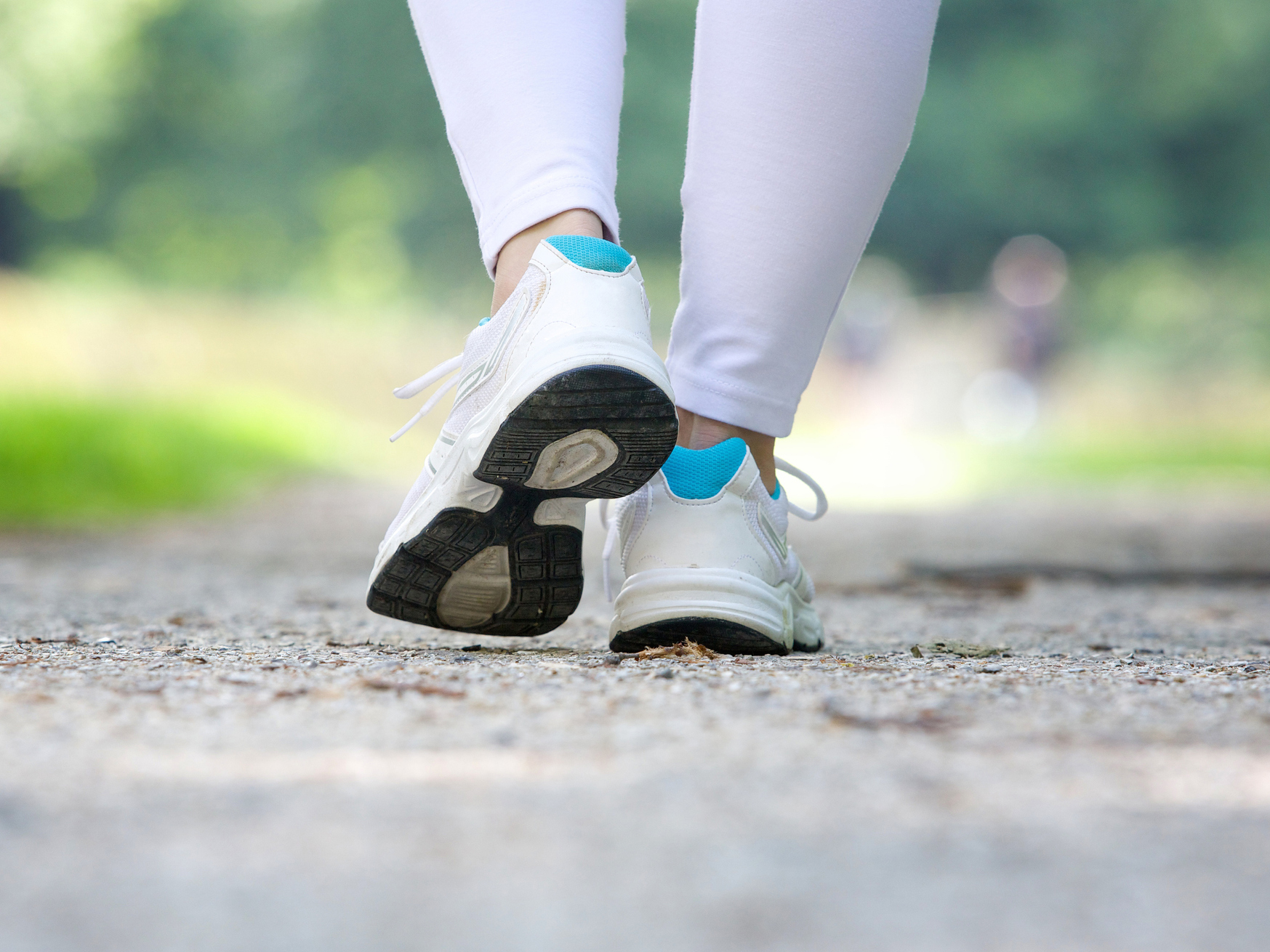Get Easy Health Digest™ in your inbox and don’t miss a thing when you subscribe today. Plus, get the free bonus report, Mother Nature’s Tips, Tricks and Remedies for Cholesterol, Blood Pressure & Blood Sugar as my way of saying welcome to the community!
Your risk of 7 different cancers is just a walk away

How much exercise do YOU get each week?
I know that I don’t get nearly enough. Winter is keeping me indoors and away from walking, my favored form of exercise. I’ve resorted to walking up and down the (many) stairs in my house to keep an exercise routine going.
A recent study shows that as little as 7.5 hours of physical activity a week can cut my risk of developing breast cancer, which my mom had (she was treated successfully, but it’s still a risk for me).
That’s just over an hour a day.
I can definitely carve out that time each day to lower my risk and quite possibly extend my life.
What about you?
Exercise lowers cancer risk
Research has already shown us that physical activity is associated with a lowered risk of several cancers. But it’s been unclear just how much exercise we’re talking about.
A review of research that was recently published in the Journal of Clinical Oncology has done a lot to clarify this.
The review was conducted by investigators at the National Cancer Institute, the American Cancer Society, and the Harvard T.H. Chan School of Public Health. It examined data from 750,00 participants in nine studies.
Related: 8 food sources identified as ‘chemopreventive’ may be future of cancer therapy
Physical activity was associated with a lowered risk of colon cancer in men, breast and endometrial cancer in women, and kidney and liver cancer, myeloma and non-Hodgkin’s’ lymphoma in both men and women.
But there’s a catch.
To really take advantage of this knowledge, you need to understand something called METs.
But how much exercise?
METs stands for metabolic equivalents. Using METs is a way of comparing the energy expenditure of different activities.
One MET is defined as the energy you use when you’re resting or sitting still.
When I climb those stairs, I could be expending as much as 4 METs per hour if I do it with some speed. A brisk walk is a 5 MET activity. On the other hand, while I sit here at my desk, I’m only consuming 1.3 METs per hour.
The review discussed above also revealed that it’s not just the MET value of the activity you do, but how much you do it, that counts when it comes to lowering cancer risk.
For example, 7.5 MET hours/week lowered a man’s risk of colon cancer by 8 percent, while a 14 percent risk reduction was gained from engaging in 15 MET hours per week.
“Physical activity guidelines have largely been based on their impact on chronic diseases like cardiovascular disease and diabetes,” said Dr. Alpa Patel, senior scientific director of epidemiology research at the American Cancer Society. “These data provide strong support that these recommended levels are important to cancer prevention, as well.”
So, what does this mean for you?
Practical tips to get you moving and slash your cancer risk
Put simply, it means that incorporating movement into your days can keep cancer away.
And, you may be surprised at how little it takes to do this.
For example, if you’re a man concerned with prostate cancer, know that the difference between those 7.5 and 15 MET hours mentioned above is the difference between 1.5 hours and three hours of brisk walking each week.
The same amount of time spent doing some yard work (mowing, raking, etc.) would have the same result.
If you play tennis, bike, swim, or even play golf regularly, you’re also lowering your cancer risk!
And, while that physical activity is guarding against cancer, it’s also safeguarding your memory, protecting your heart and improving your mood. If there’s ever been a win-win, this is it!
Editor’s note: Advancements in cancer treatment and prevention happen every day. Problem is, you’re not hearing about most of them. Click here to discover natural and alternative ways to avoid and beat cancer, including minerals, herbs, supplements, foods and proven therapies — all in one comprehensive guide, Surviving Cancer! For a preview, click here!
Sources:
- Report links recommended physical activity levels to lower risk of seven cancers — Neuroscience News
- What Exactly Are METs, and What Should You Know About Them? — Healthline
- Amount and Intensity of Leisure-Time Physical Activity and Lower Cancer Risk — Journal of Clinical Oncology
- Active Lifestyle — Including Housework and Walking — Reduces Risk Of Endometrial Cancer, Researchers Find — Vanderbilt News | Vanderbilt University












